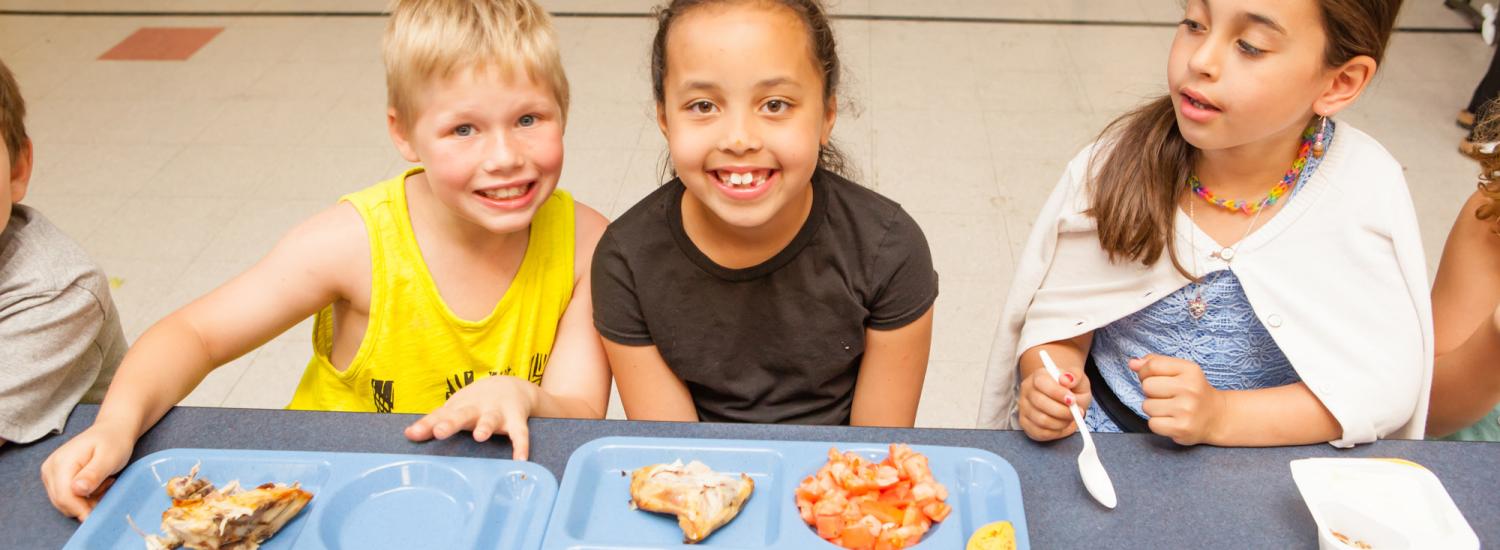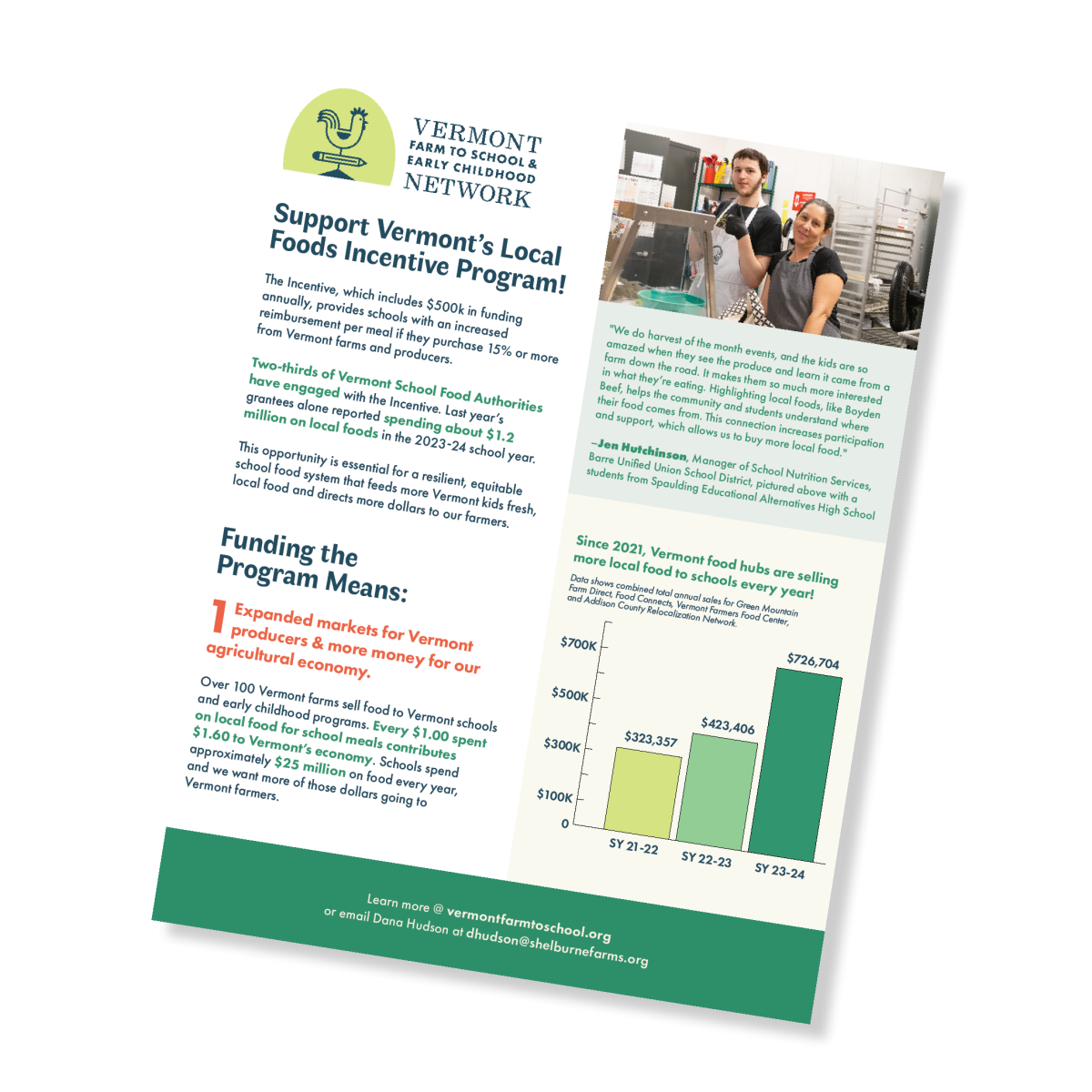As a Network, we advocate for the state-level funding of two key programs that deepen the connections between Vermont classrooms, cafeterias, and communities: the Local Foods Incentive and the Farm to School & Early Childhood Grant Program. It is these supports — in the form of funding, financial incentives, and technical assistance to schools, districts, and early childhood programs — that can be the difference between wanting to advance foods systems education and local purchasing and making it happen.
Every February, we organize Farm to School & Early Childhood Awareness Day at the State House to show legislators the impacts of farm to school and urge continued support of these programs, which are level-funded in the Governor’s proposed budget, totaling up to $1 million in annual funding. During the day, teachers, students, farmers, producers, school nutrition professionals and farm to school champions from across the state testify and share how farm to school is making a difference in their businesses, schools, and communities.
We’re sharing a few highlight testimonies from the day, beginning with voices from school nutrition programs and the local producers and farmers they are sourcing from.
-
“When we have Universal School Meals, more children eat school meals. This increased participation gives us much greater labor production efficiency, allowing us to increase the percentage of the program's revenue that we can spend on food. This affords us the flexibility to pay a little more for local foods versus vegetables from California, or beef from Iowa, or apples from Washington, or — God help us — fake maple syrup. Farmers know that they can count on this income and adjust their production and sales plans accordingly. It is the definition of a virtuous cycle.” -
“What I find so gratifying is the look on the faces of the kids when we come in with our maple syrup, and knowing that these kids are seeing food produced next door. Maple syrup and all the other food that they eat doesn't come from a store.” -
“To know [it’s] a worthwhile investment of our time and resources to work in farm to school is really helpful. These local food multipliers of $3 to $1—those dollars aren’t a flash in the pan. Every local spend that goes into this space helps act like a tugboat, rerouting this ocean liner of what school food service is in a direction that's more conducive with local.” -
“Over the years, I've learned a lot, and have been able to witness first hand the differences in meal participation when state and federal programs shift and change. Since 2023, as we shifted our focus to increasing the percentage of local foods we serve to meet the Local Foods Incentive Grant threshold, our lunch participation has increased by almost 20%. That translates to roughly 120 more students eating school lunch each day.” -
We’ll be sharing more stories all throughout the month—visit our stories page to find the updates.
Banner photo: Ben Hudson.

